Nintendo Switch OLED vs Switch vs Switch Lite: Parents guide
There are now 3 versions of the Nintendo Switch to consider, but which is best for you? The Switch OLED, normal Switch or Lite Switch?
You've got to hand it to Nintendo. For every Wii they have a Wii U. But for every Wii U they have a Switch. The company's latest console has once again seen Nintendo hit a sweet spot for gamers that PlayStation and Xbox continue to ignore. Easy to use, functional, affordable, couch multiplayer focused and filled with games that are great for both kids and adults, and for adults playing with kids.
By the end of 2021, the Switch not only surpassed 100 million units sold, but likely the 101.63 million units the Wii sold. Phenomenal. This for a console derided upon release for not knowing if it was a handheld or a console. As well as for using outdated technology well behind the PlayStation 5 and Xbox Series X.
Since its launch in 2017, Nintendo has not only made subtle improvements to the core of the normal Nintendo Switch, but created 2 variants to further meet gamer needs. The Nintendo Switch Lite and the Nintendo Switch (OLED). So, what is the difference between these consoles? And which is best for you?
Let's dive into a Nintendo Switch OLED vs normal Nintendo Switch vs Switch Lite comparison.
Quick verdict: Which Nintendo Switch should you buy?
- Playing on a TV only? Get a normal Switch.
- Intending to play in TV and in Handheld modes? Get a Switch (OLED).
- Primarily playing in Tabletop mode? Get a Switch (OLED).
- Only wanting to play in Handheld mode? Get a Switch (OLED), unless…
- You're very low on budget, then get a Nintendo Switch Lite.
- A parent who just wants to shut their kids up? Get a second-hand normal Nintendo Switch made 2019 or later.
Comparing the specs
Advice from a parent buying a Switch
The Nintendo Switch can be played in 3 key modes: Handheld, Tabletop or TV. The latter is where it acts like a traditional console, with you playing on a TV while sitting back with controllers. While Handheld mode sees you holding it in your hands like, well, I would say a Nintendo 3DS, it's shaped more like the old Atari Lynx.
Tabletop mode is where you use its kickstand to stand it up on a flat surface. You can then remove the Joy-Cons and sit back and play the Switch as if its screen is the TV. It's a bit of a novelty. Handy to have, but we'll assume in this article that you're not buying a Switch just to play in Tabletop mode.
If you intend playing in both TV and Handheld mode, then your comparison point is the Switch (OLED) vs normal Switch. If, however, you intend to primarily play in Handheld mode, then your comparison point is the Nintendo Switch Lite vs the Nintendo Switch (OLED) model.
As a parent with 3 kids, even though my Switch is set up to be used in TV mode, I reckon it's used 50-50 in that and Handheld modes.
Usually, they are playing together or with friends on the big screen. But sometimes a child just wants to take it to their room and play alone. Other times one of their siblings is keen to watch a TV show and not play, so being able to detach the Switch is a boon. When we are travelling, it's Handheld mode all the way in the car, and occasionally Tabletop mode at our destination.
That versatility is what makes the Nintendo Switch console so great. With all that in mind, as a parent, I would discount the Switch Lite altogether. Unless you want a way to afford 2 or more Switch consoles.
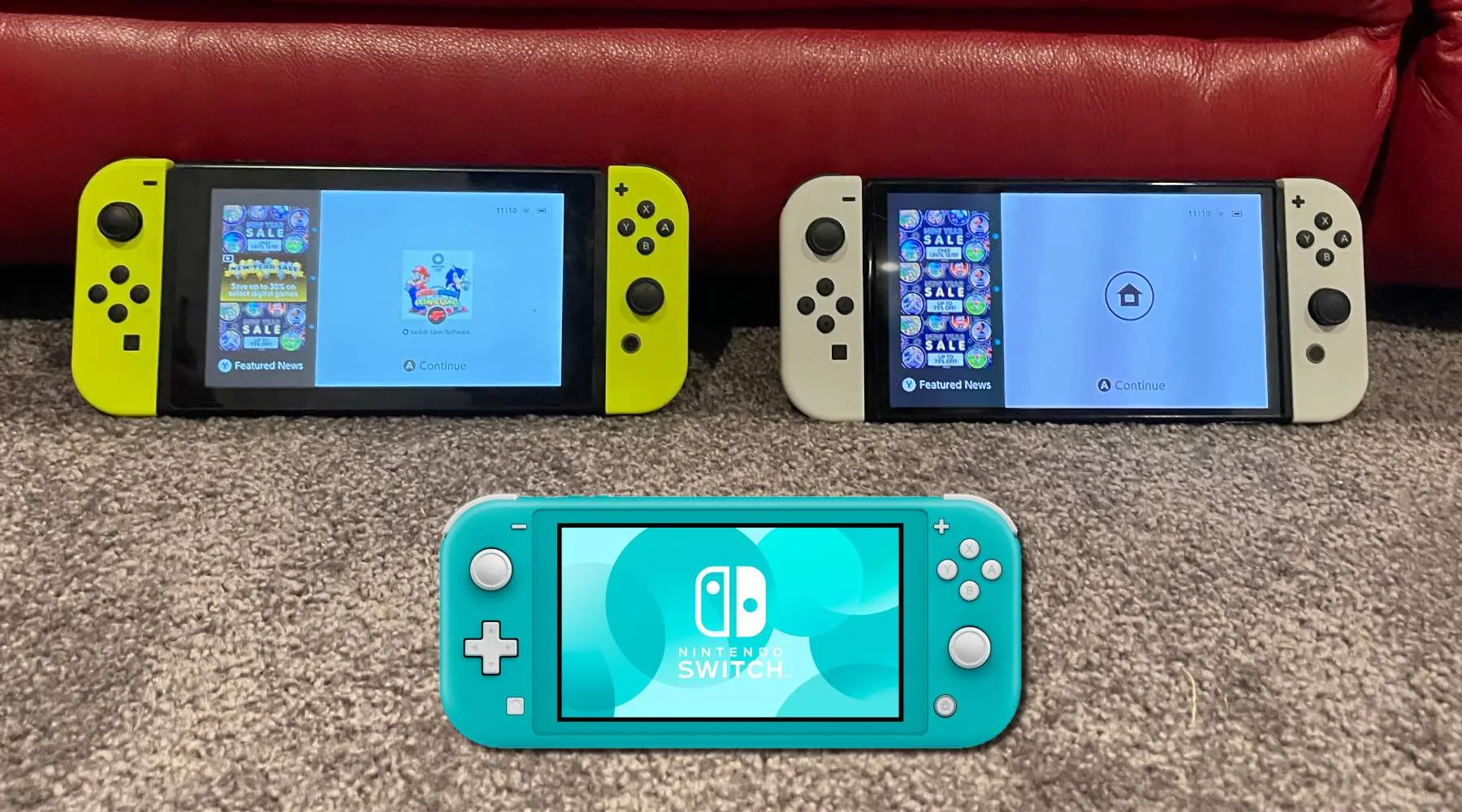
The problem of having 2 Switch consoles and 1 account
The issue I'm about to document is a stain on Nintendo's reputation, but one every parent must know. If you own 2 Nintendo Switch consoles, playing your games on both is far from seamless.
Your first Switch console becomes your Primary console, and it (and any profiles set up on it) can play all the games you buy and download without being challenged. Offline or online. You can install your account on your second Switch and download and play any games you own too, but you'll be challenged.
The second Switch will demand that you connect to the Internet first to confirm you are who you say you are. For a console advertised as portable, this is very frustrating. Especially when you are on the road or camping and may not have Internet or even reception to hotspot your phone. This has happened to me many times in Australia.
Then, if the person on your primary console is playing with the main account at the same time, then no one can play the games you own on the second Switch simultaneously. What a joke! This on a console aimed at families.
The workaround is to have the primary console playing on a secondary account, and the second Switch playing on the main account. As long as you have Internet access when a game is started on the second Switch, then both consoles can play games purchased through the main account.
This kerfuffle is not a deal breaker, but something parents should consider. As for Nintendo: Shame! Shame! Shame!
Who should get the normal Nintendo Switch?
In my opinion, I'd only be opting to buy a normal Nintendo Switch if you intend to predominantly play on a TV or you're buying for kids. This is because the improvements to the Switch (OLED) model, namely in its screen, only really make an impact in Handheld mode. And kids don't care as much about screen quality.
Plus, a new normal Switch is around $110 cheaper than a new Switch OLED model at the time of writing. That's a significant saving. Even better, you can likely find one second-hand given other gamers in the market will be upgrading. I've seen second-hand normal Switch consoles for under $250 on eBay.
With that in mind, the original Nintendo Switch is also a passable option for Australians who intend to use their Switch in both Handheld and TV mode, but can't stretch their budget to the OLED model.
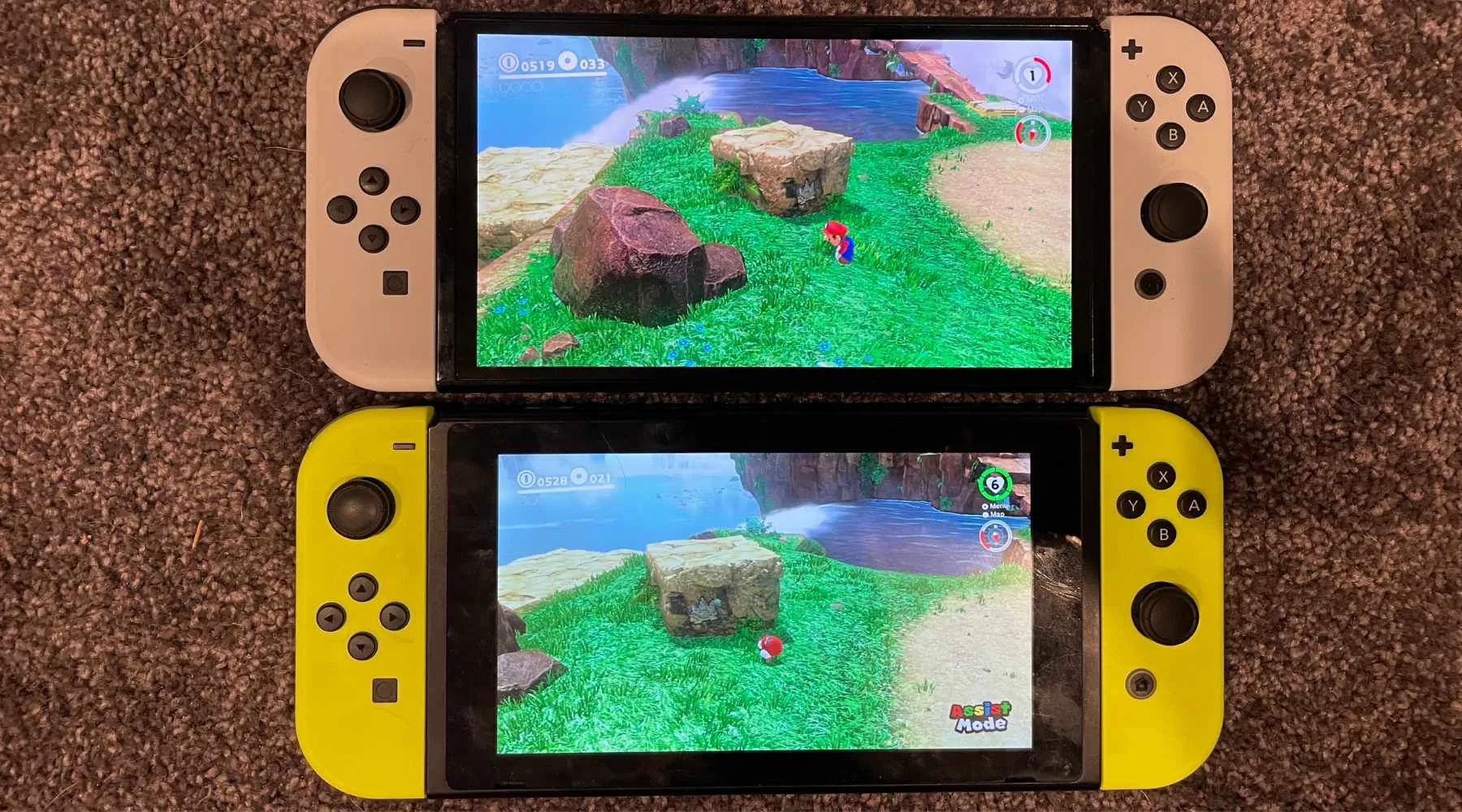
Who should get the Nintendo Switch OLED model?
If you intend to use the Switch in Handheld mode a significant proportion of the time, then I recommend the Switch (OLED) model.
The OLED model still offers the versatility of Handheld and TV modes. But if you're buying new, the extra $110 is worth it for the better screen experience in Handheld mode and the upgrades to the kickstand (for Tabletop mode) and storage.
As part of my testing, I started the same game on both the normal Switch and Switch OLED at the same time. Both take identical time to load and play the same. However, the normal Switch screen looks a lot more washed out than the vibrant OLED. You can really pick up on the improvement when you compare them side-by-side.
In terms of the controls, the music and the responsiveness overall, I noticed no discernible difference. And that was using the original 2017 normal Switch model.
When should you get the Nintendo Switch Lite?
The Nintendo Switch Lite is purely for use in Handheld mode. So, if you intend to ever use your Switch in TV mode, then the Lite is not for you. The Lite was designed as a lower-priced entry point for gamers who just wanted to get in on the Switch experience, but couldn't afford the whole package. So, it's stripped of its TV mode features.
You also can't remove the Joy-Con controllers, which means you can't lean it back on a kickstand and play multiplayer games on the go. You'll also come across a handful of games that are incompatible with the Switch Lite because they require the Joy-Cons to be removed. Most notably, Nintendo Labo.
When the Switch Lite first came out it did have the benefit of having a slightly better battery life than the normal Switch. However, models of the original Nintendo Switch that released after 2019 have a longer battery life equal to the OLED model. So, it doesn't even win on that front anymore.
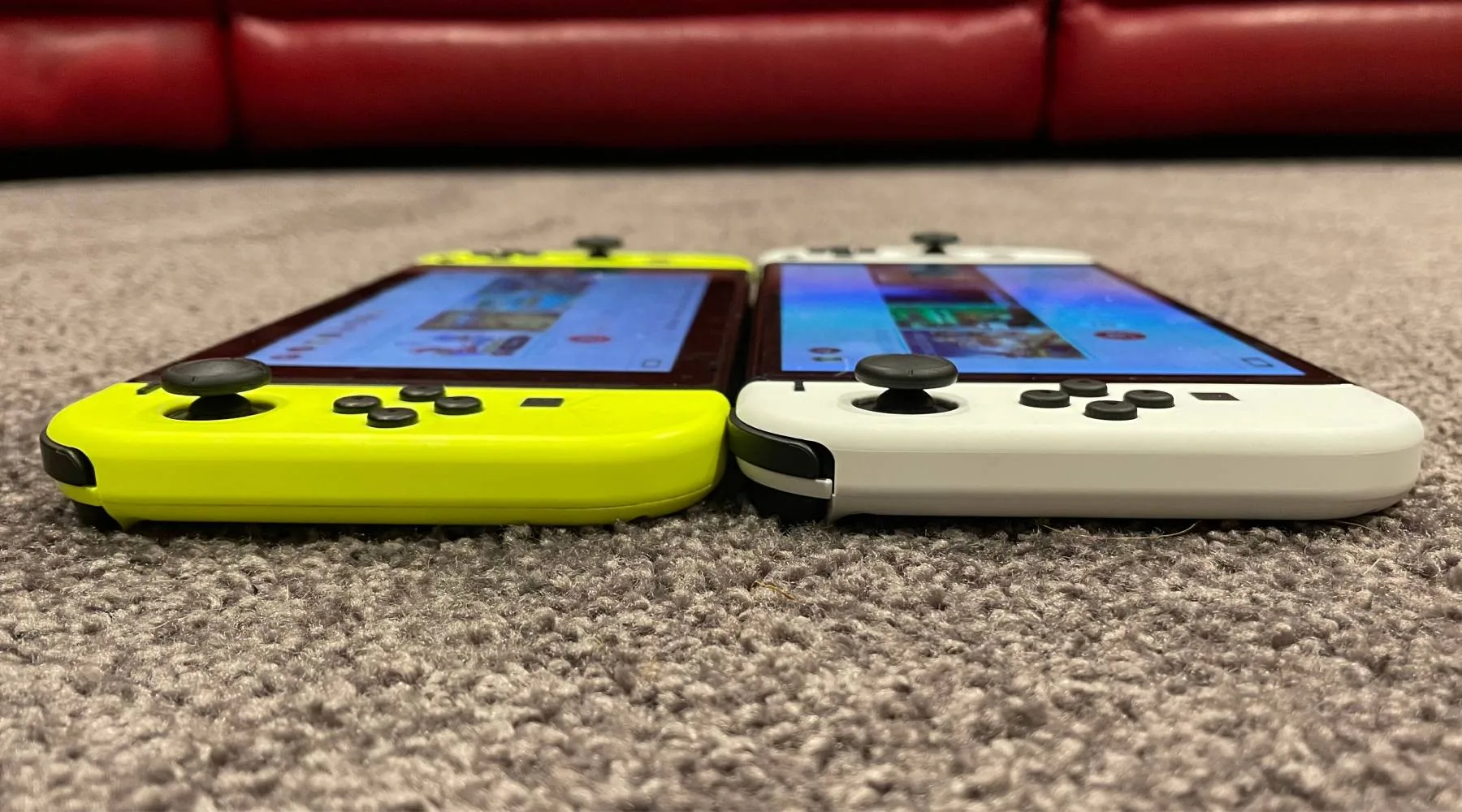
Nintendo Switch Lite vs Switch OLED
The reality is that the Nintendo Switch Lite and the Nintendo Switch (OLED) are competing for that "Handheld mode only" Nintendo market. And with its bigger and better screen, added storage capacity and ability for multiplayer on the go (thanks to the kickstand and removeable Joy-Cons), the OLED model is a lot better.
But there's also a $240 price difference. Indeed, the Switch Lite is currently selling on Amazon for under $300. So, there's that to consider.
If you're buying for kids who likely won't care about the added benefits, then the Switch Lite remains a good option due to the money that can be saved. You might even be able to get 2! But you'd have to be very sure you'd never want to dock your Switch and play on a TV like a traditional console.
For older gamers, the step to the OLED model is likely too much to resist, despite the price gap.
Is it worth upgrading from the normal Nintendo Switch to Switch OLED?
Such has been the popularity of the Nintendo Switch since it launched that we've seen very little movement in its recommended retail price. Even after the release of the Nintendo Switch (OLED), the normal Switch has retained strong value. You may be wondering then whether it is worth selling your original Switch and buying a Switch (OLED).
The reality is, the argument to upgrade your Switch to Switch (OLED) is weak. If you play in TV mode predominantly, then you'll see very little benefit at all. Just extra storage, really. The main upgrade of the Switch (OLED) is the new screen, which you don't even use in TV mode.
If you spend the vast majority of your time in Handheld mode, there is more of a case for an upgrade. The screen is definitely better and the experience more immersive as a result. But it's the only meaningful point of difference. With no changes to the raw power or the battery life, and only an incremental increase to the internal storage to crow about, you could probably live without it.
All versions play the same games after all. They load in the same amount of time, and the controls feel more-or-less identical.
If you are buying a Switch for the first time, that's when the Switch (OLED) is worth it. For the relatively minor extra investment, you might as well get the more recent tech.
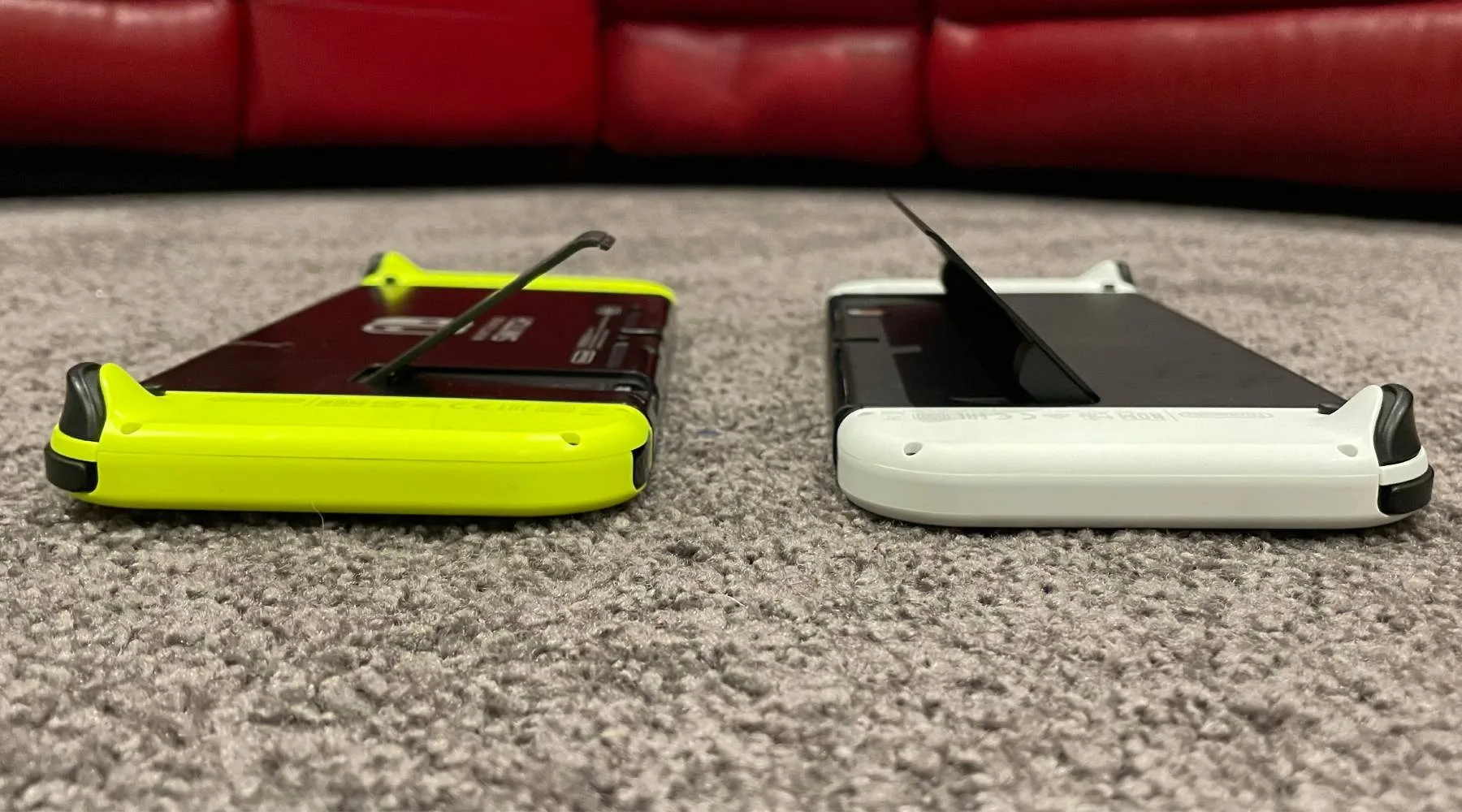
Which is the best Nintendo Switch for families?
In my experience, kids will use their Switch in both Handheld and TV modes. As such, the Nintendo Lite is out of the equation. If money is no object, then the Switch (OLED) is a solid step up from the normal Switch in Handheld mode. So, if you're buying a new console, then go with the Switch (OLED). Especially as your kids can store more games on the larger internal HD before they begin campaigning for a microSD card expansion.
However, given that the Switch (OLED) model provides no increase in raw power or battery life, and plays the same games, I think there is an opportunity for parents to save a bit of money. I'd try and get a second-hand normal Nintendo Switch that comes with a bunch of games and ideally some secondary controllers.
Will Nintendo Switch games work on the OLED?
The Switch (OLED) plays the same games as the normal Nintendo Switch. All the consoles exist in the same ecosystem, use the same Nintendo Online service, and have the same quality Joy-Cons.
What can you do on a Nintendo Switch OLED?
You can do everything on a Nintendo Switch OLED that you can do on a normal Switch. There's improvement to the technology, not to the functionality. So, you can play online, play on TV and in Handheld mode, and use Tabletop mode. You can also remove the Joy-Cons and use them as motion controllers. And more.
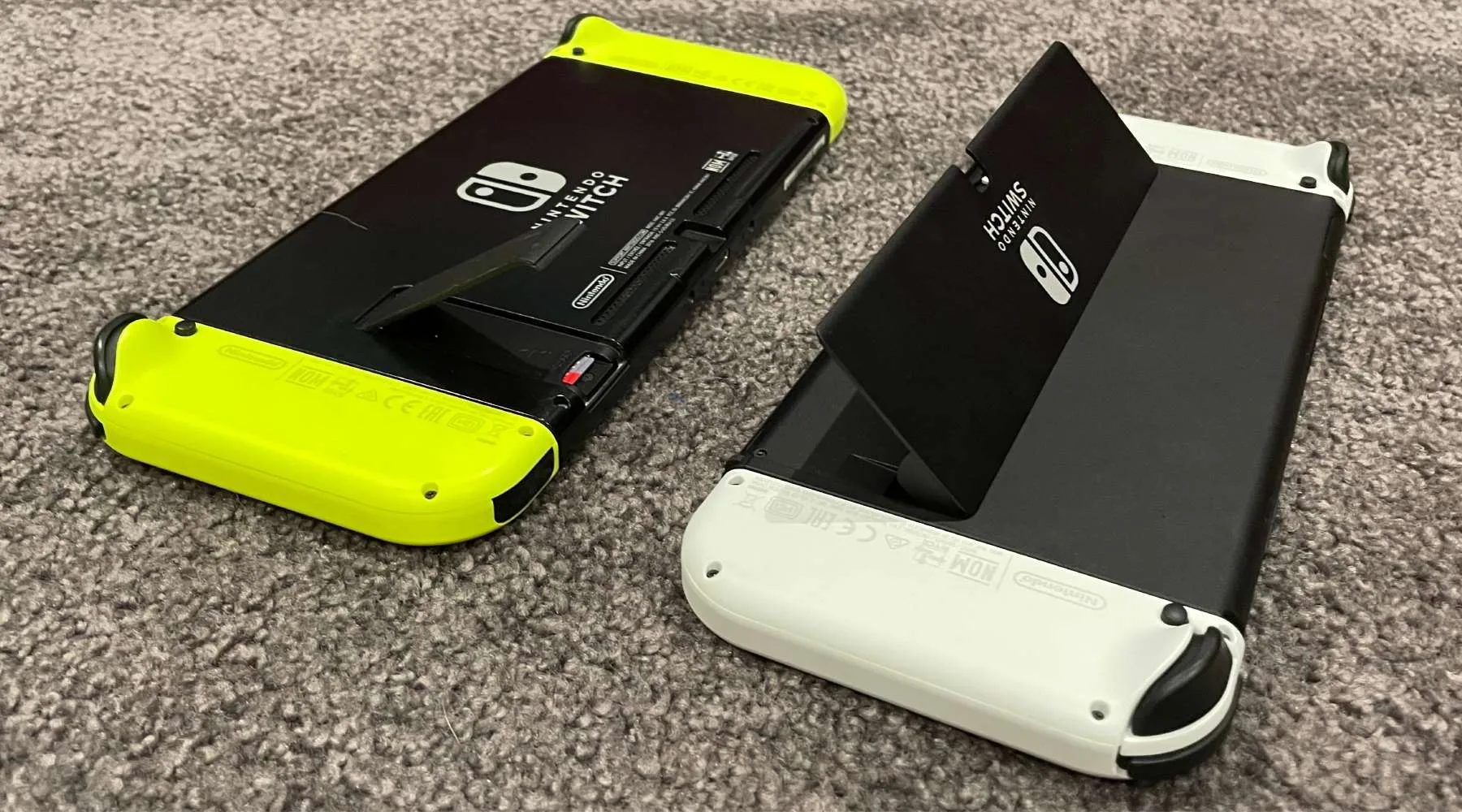
What's new in the Nintendo Switch OLED?
The games look a lot better on the Switch screen. This is due to the 6.2-inch LCD screen being replaced by a 7-inch OLED screen. The kickstand on the OLED can now be adjusted in increments, rather than to a fixed angle, and is longer for greater stability. There's a new wired LAN port for better Internet. While the storage has been doubled from 32GB to 64GB, this still isn't much. And if you intend to play a lot of games, you'll likely need to upgrade your hard drive with a microSD card.
Finally, you'll notice the speakers are marginally better (as in louder) on the OLED model. Although when I tested them side-by-side you could barely tell. The buttons have also been refined to offer a slightly nicer feel.
What is the newest Nintendo Switch?
Released 8 October 2021, the Nintendo Switch (OLED) is the newest model in the company's console family.
How expensive is the Nintendo Switch?
There are always deals to be found, but looking on Amazon as of the start of 2022, in Australia you can buy the Nintendo Switch (OLED) for $539, the normal Switch for $429 and the Switch Lite for $299.
That's on the expensive end of the spectrum when you compare its age and power with the likes of the Xbox Series S ($499) and PlayStation 5 Digital Edition ($599). However, it's a fair bit below competing consoles the Xbox Series X and PlayStation 5, which come in at $749. Sony and Microsoft's consoles are also very hard to come across during COVID.
The best value for money console in 2022, in terms of power and performance versus price, is hands-down the PS5 Digital Edition.
Is the Switch going to be discontinued?
There are no plans for the original Nintendo Switch to be discontinued. All 3 models will continue to exist in parallel into the future. However, I suspect the Lite may become rarer as time moves on.
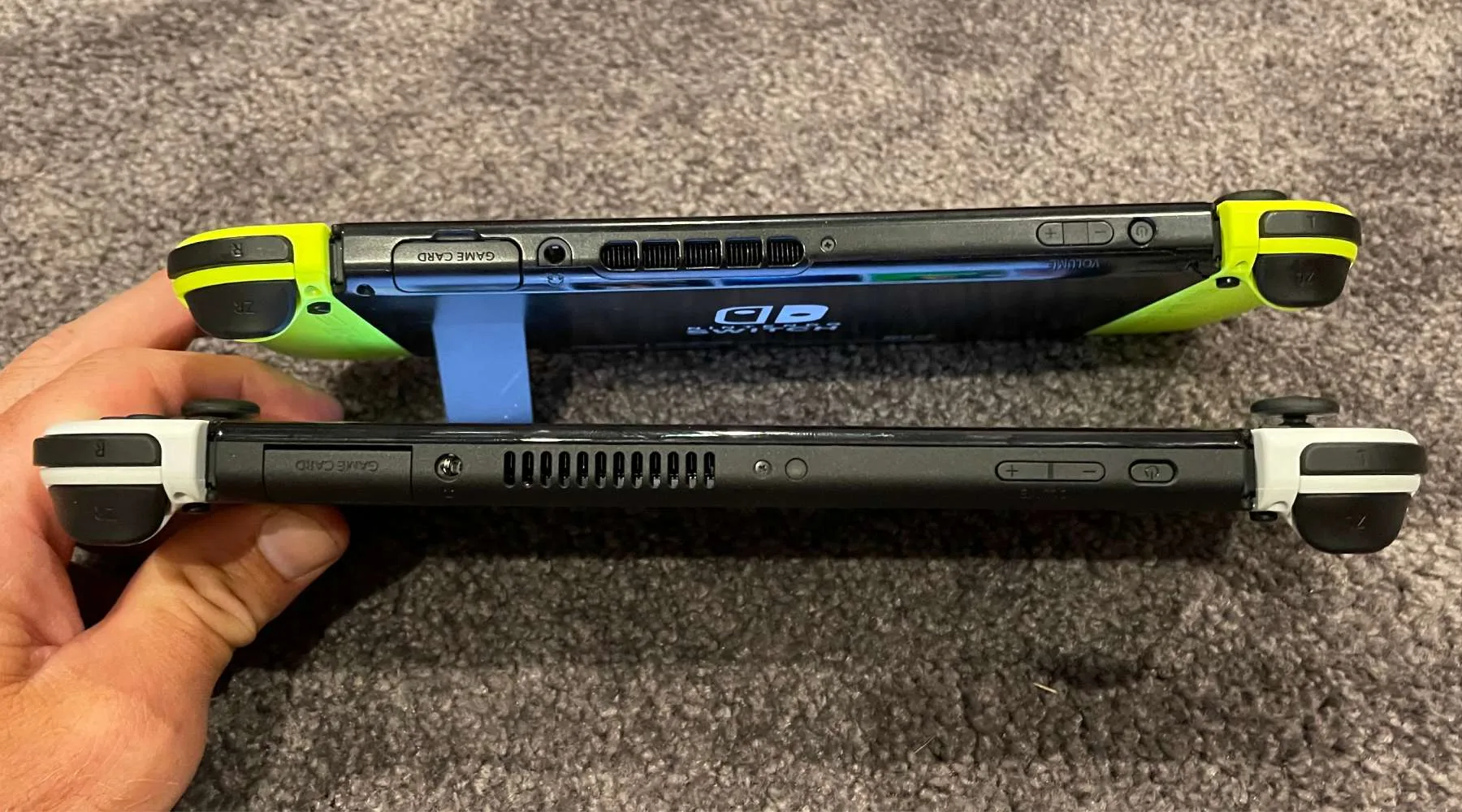
More guides on Finder Shopping
-
The best SSD hard drives for PlayStation 5: 64 models compared
What's the best PS5 SSD expansion hard drive you can buy in Australia?
-
Where to buy the PlayStation 5 in Australia: From $649 [Updated]
We've rounded up all the places you can buy the PS5 in Australia.
-
Where to buy the Xbox Series X in Australia 2024
Microsoft's next-generation Xbox has officially launched. Here are all the places you can buy the Xbox Series X in Australia.
-
Xbox Series X and Series S Australia: Best price deals and release date
Here are the best price deals for the Xbox Series X and Series S and the release date in Australia.
-
PlayStation 5 Guide: Best games, accessories, specs, price, features and news
Sony's next-generation PlayStation console is coming to Australia; here are all the details.
-
Clash of the classics: SNES Classic Mini vs Sega Mega Drive Classic vs Atari Flashback
It's the clash of the classic consoles, and only one can emerge victorious.
-
Nintendo Switch review: Ready to rumble
Get the full story with our hands-on review and video of the Nintendo Switch.
-
PAX AUS 2016: All the news from Australia’s gaming expo
Australia's biggest gaming event is almost here.
-
Complete list of free PlayStation Plus games (updated monthly)
Sony offers up a different selection of free games across PS4 and PS5 every month. Here's the complete list of free PlayStation Plus games.
-
Microsoft Hololens: Australian pricing and availability
Microsoft has announced a price and prerelease date for the developer edition of its Hololens augmented reality device.